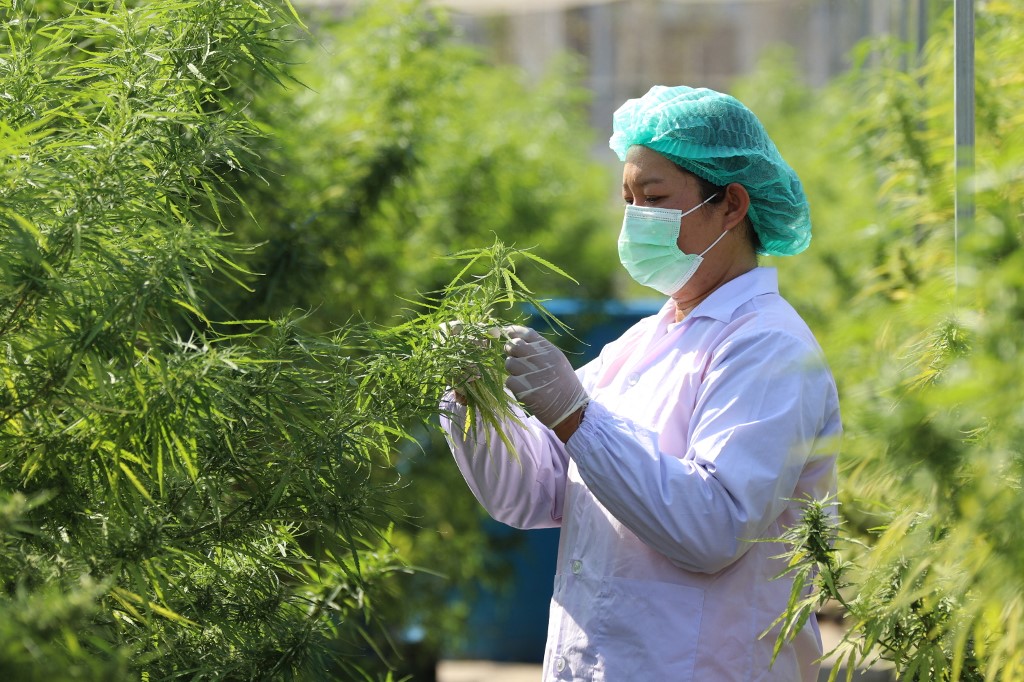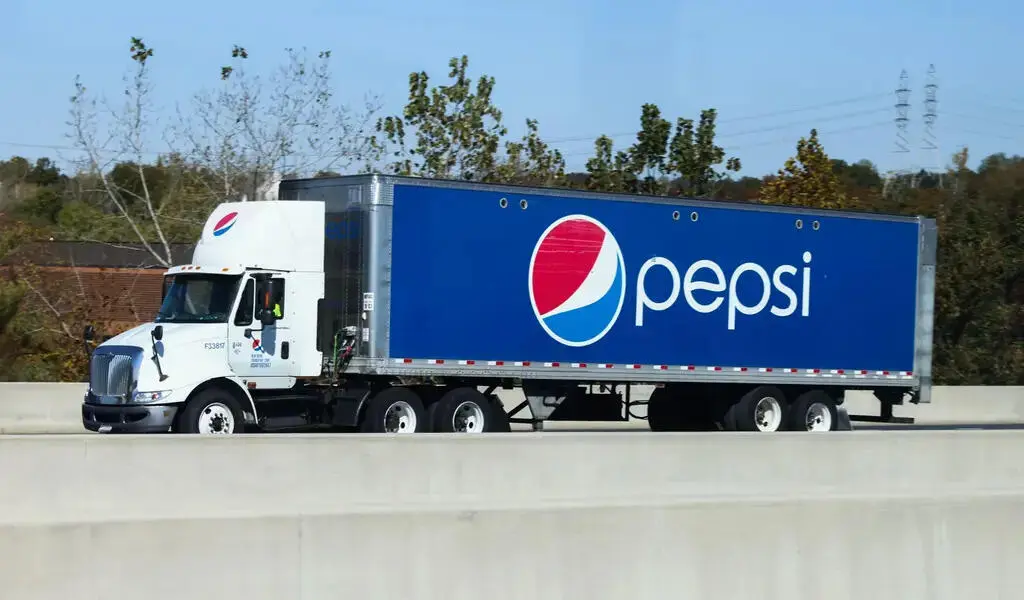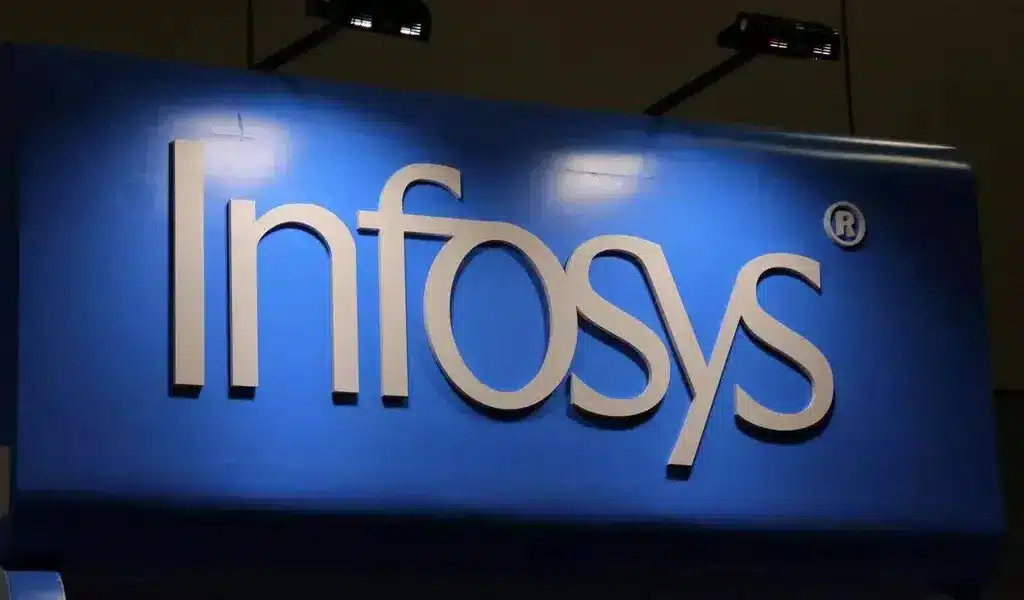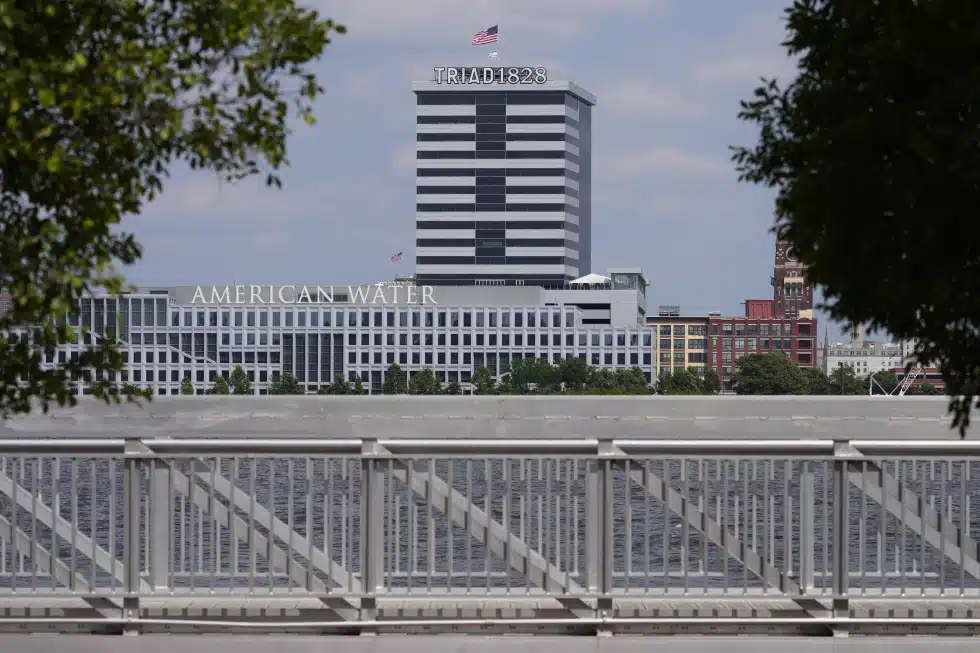Business
Multipurpose Cannabis Could Light Up Thailand’s Economic Engine

Experts say cannabis could generate up to Bt8 billion for Thailand’s pharmaceutical industry over the next five years, but sadly farmers stand to make very little from growing the herb crop.
Last year, Thailand removed cannabis and hemp leaves from its list of banned narcotics (seeds and buds remain banned).
Individuals are still prohibited from growing marijuana for sale, though universities, community enterprises, medical professionals and traditional medicine practitioners can seek a licence to grow it commercially.
“We believe marijuana has great potential as a cash crop because more patients will start using marijuana-based drugs soon,” said Ravissa Suchato, an economist at Kasetsart University’s Agricultural and Resource Economics Department.
Ravissa led a study titled “Economic Impact of Commercialised Cannabis Cultivation in Thailand”, which was funded by the Thailand Science Research and Innovation (TSRI) and covered both traditional and modern medicine.
The study found that modern medicine has used marijuana to treat patients suffering from three key conditions – cancer, epilepsy and multiple sclerosis.
Two natural compounds found in plants of the cannabis genus, cannabidiol (CBD) and tetrahydrocannabinol (THC), are used in both traditional and modern medicine.
THC produces a sense of euphoria (a “high”), while CBD has been shown to help patients suffering from anxiety, depression and seizures.
In Thailand, cannabis-based medication is used for palliative care of cancer patients, not as a cure for disease, said Ravissa, adding that almost 1 million (996,743) patients are believed to have taken marijuana-based medicines in Thailand last year.
Money matters in modern medicine
Based on average use of 170 grams per person per year, the estimated market value of medical cannabis will rise to Bt4.4 billion in 2025. About Bt1.2 billion worth of medical cannabis was consumed last year.
If average per-person consumption rises to 240 grams per year, the value will grow as high as Bt8 billion by 2025.
The market value of modern cannabis-based pharmaceuticals will vary based on the price of marijuana and amounts used. The price of marijuana used as an ingredient in modern medications is estimated at between Bt153 and Bt744 per gram, based on the price set in other countries. Thailand does not have a market price for marijuana yet because it’s still not being sold commercially.
Marijuana-based pharmaceuticals are expected to be produced by the Government Pharmaceutical Organisation (GPO), Chao Phya Abhaibhubejhr Hospital and the Public Health Ministry’s Herb and Thai Traditional Medicine Division.
Cheaper herbal concoctions
The market value of traditional cannabis-based medicines is far lower, estimated at about Bt10.4 million last year. It is forecast to grow by about 30 per cent annually, reaching Bt38 million in the next five years.
Just under 700 kilograms of marijuana priced at Bt15 per gram was used in traditional medicines last year.
In comparison, up to 2.2 tonnes of marijuana was used in modern medicines last year, and that figure is expected to rise to 10.8 tonnes in 2025.
“Based on these estimates, we will only need a relatively small plantation area of about 19 rai [3.04 hectares] to meet the demand for marijuana in the pharmaceutical and traditional medication industry,” Ravissa said.
That would mean farmers stand to gain little from cultivating marijuana for medical use.
However, this study does not cover the use of cannabis-hemp in food products or in the textile industry.
The global market for legalised marijuana in 2018 was worth US$10.3 billion and is expected to rise to $39.4 billion in 2023. Of this, marijuana for recreational purposes accounted for $5.2 billion in 2018, which is expected to rise by 38.7 per cent to $26.8 billion.
“Globally, the recreational use of marijuana has risen a lot faster than pharmaceutical use, so the prospect of exporting marijuana-based medicines from Thailand is still a long way off,” Ravissa added.
Wider use
Somporn Isvilanonda, a senior fellow at the Knowledge Network Institute of Thailand, agrees that both cannabis and hemp have the potential to become cash crops.
If the stems and leaves of the cannabis plant can be used as an ingredient in food and beverages, then the potential of marijuana as a cash crop will rise further.
Investors have recently shown interest in buying shares in Thai corporations that are expected to use oil from hemp-cannabis plants in their products, including Charoen Pokphand Foods, Carabao Group, T.A.C. Consumer, Osostspa and Ichitan.
Hemp also has great potential in the textile industry, especially since its fibre has been used to make cloth in Thailand.
Viroj Na Ranong, research director at Thailand Research Development, however, has doubts about the money-spinning potential of cannabis.
“At this point, we are not sure about how many diseases cannabis can treat. As far as I know, it can only be used to help people ‘feel good’, plus it can also become addictive,” he argued, adding that politicians may be exaggerating the benefits of marijuana to win votes.
Source: Thai PBS

Business
PepsiCo Reduces Revenue Projections As North American Snacks And Key International Markets Underperform.

(VOR News) – In the third quarter of this year, Pepsi’s net income was $2.93 billion, which is equivalent to $2.13 per share. This was attributed to the company.
This is in stark contrast to net income of $3.09 billion, which is equivalent to $2.24 per share, during the same period in the previous year. The company’s earnings per share were $2.31 when expenses were excluded.
Net sales decreased by 0.6%, totaling $23.32 billion. Organic sales increased by 1.3% during the quarter when the effects of acquisitions, divestitures, and currency changes are excluded.
Pepsi’s beverage sales fell this quarter.
The most recent report indicates that the beverage and food sectors of the organization experienced a 2% decline in volume. Consumers of all income levels are demonstrating a change in their purchasing habits, as indicated by CEOs’ statements from the previous quarter.
Pepsi’s entire volume was adversely affected by the lackluster demand they encountered in North America. An increasing number of Americans are becoming more frugal, reducing the number of snacks they ingest, and reducing the number of times they purchase at convenience stores.
Furthermore, Laguarta observed that the increase in sales was partially attributed to the election that occurred in Mexico during the month of June.
The most significant decrease in volume was experienced by Quaker Foods North America, which was 13%. In December, the company announced its initial recall in response to a potential salmonella infection.
Due to the probability of an illness, the recall was extended in January. Pepsi officially closed a plant that was implicated in the recalls in June, despite the fact that manufacturing had already been halted.
Jamie Caulfield, the Chief Financial Officer of Pepsi and Laguarta, has indicated that the recalls are beginning to have a lessening effect.
Frito-Lay experienced a 1.5% decline in volume in North America. The company has been striving to improve the value it offers to consumers and the accessibility of its snack line, which includes SunChips, Cheetos, and Stacy’s pita chips, in the retail establishments where it is sold.
Despite the fact that the category as a whole has slowed down in comparison to the results of previous years, the level of activity within the division is progressively increasing.
Pepsi executives issued a statement in which they stated that “Salty and savory snacks have underperformed year-to-date after outperforming packaged food categories in previous years.”
Pepsi will spend more on Doritos and Tostitos in the fall and winter before football season.
The company is currently promoting incentive packets for Tostitos and Ruffles, which contain twenty percent more chips than the standard package.
Pepsi is expanding its product line in order to more effectively target individuals who are health-conscious. The business announced its intention to acquire Siete Foods for a total of $1.2 billion approximately one week ago. The restaurant serves Mexican-American cuisine, which is typically modified to meet the dietary needs of a diverse clientele.
The beverage segment of Pepsi in North America experienced a three percent decrease in volume. Despite the fact that the demand for energy drinks, such as Pepsi’s Rockstar, has decreased as a result of consumers visiting convenience stores, the sales of well-known brands such as Gatorade and Pepsi have seen an increase throughout the quarter.
Laguarta expressed his opinion to the analysts during the company’s conference call, asserting, “I am of the opinion that it is a component of the economic cycle that we are currently experiencing, and that it will reverse itself in the future, once consumers feel better.”
Additionally, it has been noted that the food and beverage markets of South Asia, the Middle East, Latin America, and Africa have experienced a decline in sales volume. The company cut its forecast for organic revenue for the entire year on Tuesday due to the business’s second consecutive quarter of lower-than-anticipated sales.
The company’s performance during the quarter was adversely affected by the Quaker Foods North America recalls, the decrease in demand in the United States, and the interruptions that occurred in specific international markets, as per the statements made by Chief Executive Officer Ramon Laguarta.
Pepsi has revised its forecast for organic sales in 2024, shifting from a 4% growth rate to a low single-digit growth rate. The company reiterated its expectation that the core constant currency profitability per share will increase by a minimum of 8% in comparison to the previous year.
The company’s shares declined by less than one percent during premarket trading. The following discrepancies between the company’s report and the projections of Wall Street were identified by LSEG in a survey of analysts:
SOURCE: CNBC
SEE ALSO:
Old National Bank And Infosys Broaden Their Strategic Partnership.
Business
Old National Bank And Infosys Broaden Their Strategic Partnership.

(VOR News) – Old National Bank, a commercial bank with its headquarters in the Midwest, and Infosys, a firm that specializes in information technology, have recently entered into a strategic expansion of their link, which has been in place for the past four years.
This expansion is more likely to take place sooner rather than later, with the likelihood being higher.
For the purpose of making it possible for Old National Bank to make use of the services, solutions, and platforms that are offered by Infosys, the objective of this expansion is to make it possible for the bank to transform its operations and processes through the application of automation and GenAI, as well as to change significant business areas.
This lets the bank leverage Infosys’ services, solutions, and platforms.
Old National Bank Chairman and CEO Jim Ryan said, “At Old National, we are committed to creating exceptional experiences for both our customers and our fellow employees.”
This statement is applicable to Old National Bank. Infosys is carefully managing the business process innovations that it is putting us through, putting a strong emphasis on efficiency and value growth throughout the process to ensure that it is carried out efficiently.
This is a routine occurrence throughout the entire operation. Because of Infosys’ dedication to our development and success, we are incredibly appreciative of the assistance they have provided.
Old National has been receiving assistance from Infosys in the process of updating its digital environment since the year 2020, according to the aforementioned company.
Ever since that time, the company has been providing assistance. The provision of this assistance has been accomplished through the utilization of a model that is not only powerful but also capable of functioning on its own power.
Infosys currently ranks Old National thirty-first out of the top thirty US banks.
This ranking is based on the fact that Old National is the nation’s largest banking corporation.
It is estimated that the total value of the company’s assets is approximately fifty-three billion dollars, while the assets that are currently being managed by the organization are valued at thirty billion dollars.
Dennis Gada, the Executive Vice President and Global Head of Banking and Financial Services, stated that “Old National Bank and Infosys possess a robust cultural and strategic alignment in the development, management, and enhancement of enterprise-scale solutions to transform the bank’s operations and facilitate growth.”
This remark referenced the exceptional cultural and strategic synergy between the two organizations. Dennis Gada is the one who asserted this claim. This was articulated explicitly concerning the exceptional cultural congruence and strategy alignment of the two organizations.
We are pleased to announce that the implementation of Infosys Topaz will substantially expedite the transformation of Old National Bank’s business processes and customer service protocols. We are exceedingly enthusiastic about this matter. We are quite thrilled about this specific component of the scenario.
Medium-sized banks operating regionally will continue to benefit from our substantial expertise in the sector, technology, and operations. This specific market segment of Infosys will persist in benefiting from our extensive experience. This phenomenon will enable this market sector to sustain substantial growth and efficiency benefits.
SOURCE: THBL
SEE ALSO:
American Water, The Largest Water Utility In US, Is Targeted By A Cyberattack
States Sue TikTok, Claiming Its Platform Is Addictive And Harms The Mental Health Of Children
Qantas Airways Apologizes After R-Rated Film Reportedly Airs On Every Screen During Flight
Business
American Water, The Largest Water Utility In US, Is Targeted By A Cyberattack

The largest regulated water and wastewater utility company in the United States stated Monday that it had been the target of a cyberattack, forcing the company to halt invoicing to consumers.
American Water, The Largest Water Utility In US, Is Targeted By A Cyberattack
American Water, based in New Jersey and serving over 14 million people in 14 states and 18 military facilities, said it learned of the unauthorized activity on Thursday and quickly took precautions, including shutting down certain systems. The business does not believe the attack had an impact on its facilities or operations and said employees were working “around the clock” to determine the origin and scale of the attack.

According to their website, American Water operates over 500 water and wastewater systems in around 1,700 communities across California, Georgia, Hawaii, Illinois, Indiana, Iowa, Kentucky, Maryland, Missouri, New Jersey, Pennsylvania, Tennessee, Virginia, and West Virginia.
SOURCE | AP
-

 News3 years ago
News3 years agoLet’s Know About Ultra High Net Worth Individual
-
Entertainment2 years ago
Mabelle Prior: The Voice of Hope, Resilience, and Diversity Inspiring Generations
-

 Health3 years ago
Health3 years agoHow Much Ivermectin Should You Take?
-

 Tech2 years ago
Tech2 years agoTop Forex Brokers of 2023: Reviews and Analysis for Successful Trading
-

 Lifestyles3 years ago
Lifestyles3 years agoAries Soulmate Signs
-

 Movies2 years ago
Movies2 years agoWhat Should I Do If Disney Plus Keeps Logging Me Out of TV?
-

 Health3 years ago
Health3 years agoCan I Buy Ivermectin Without A Prescription in the USA?
-

 Learning2 years ago
Learning2 years agoVirtual Numbers: What Are They For?